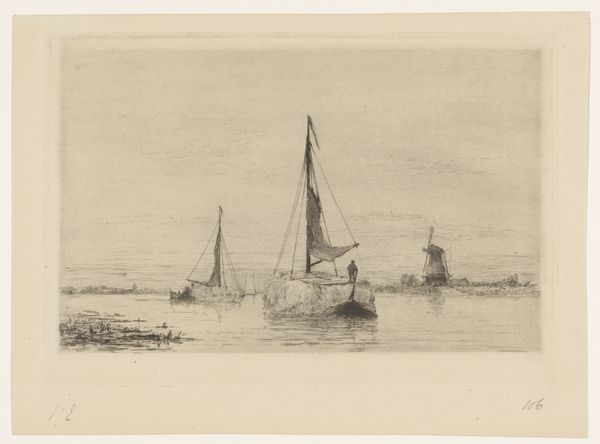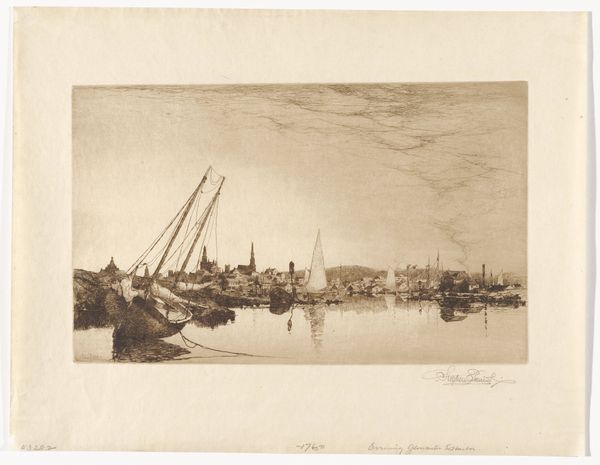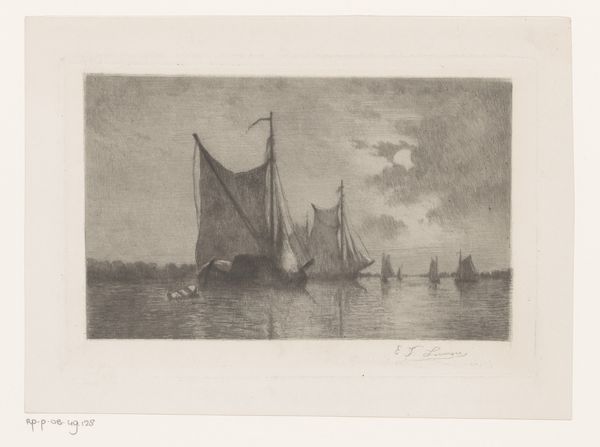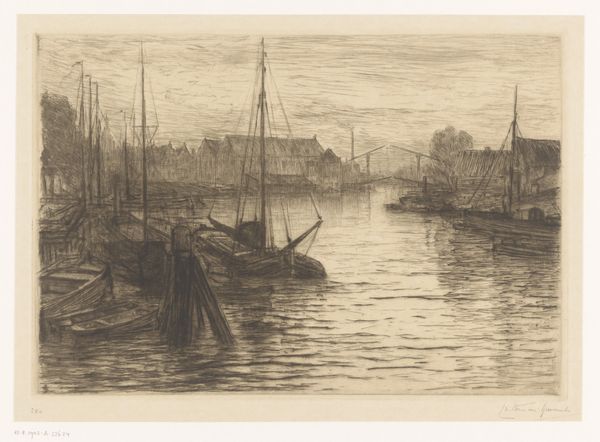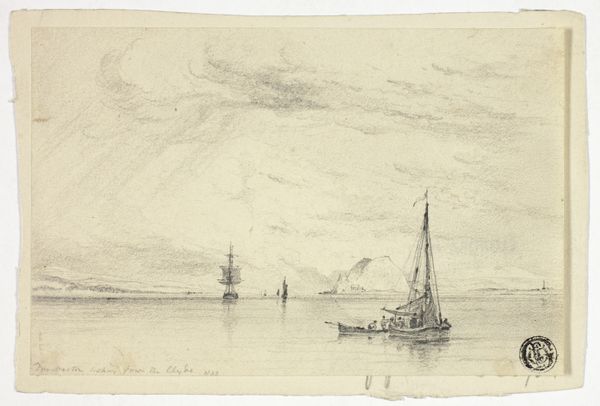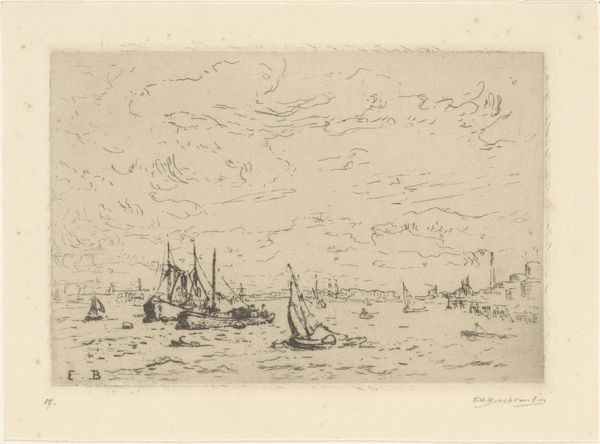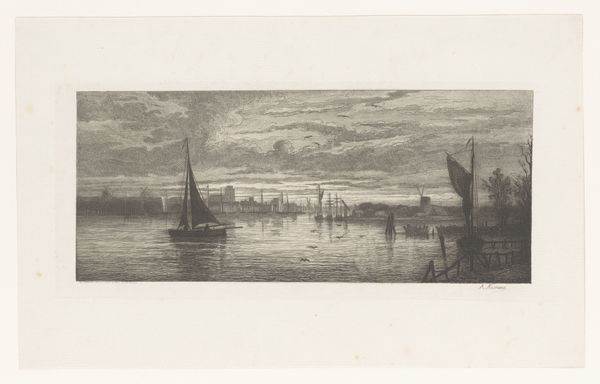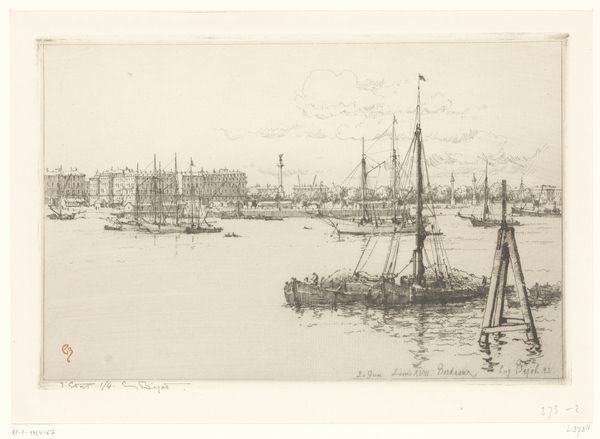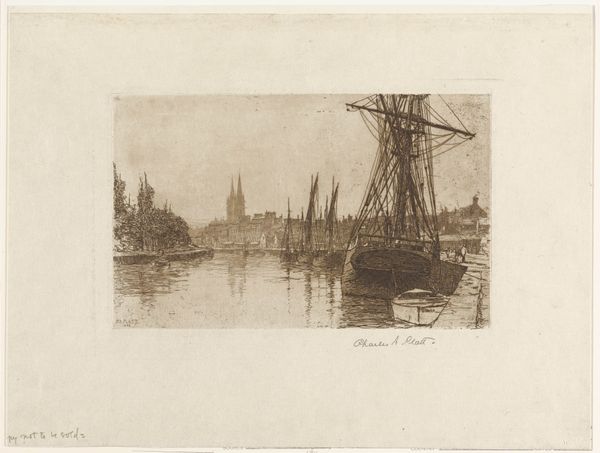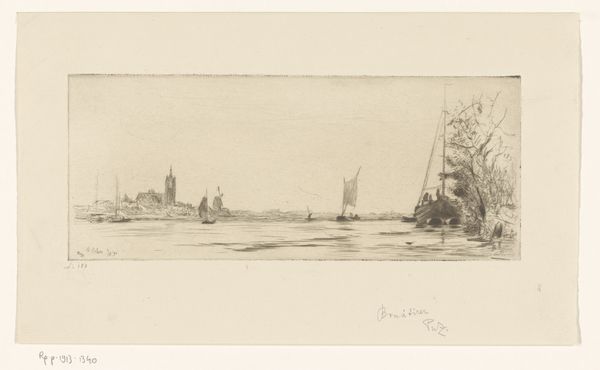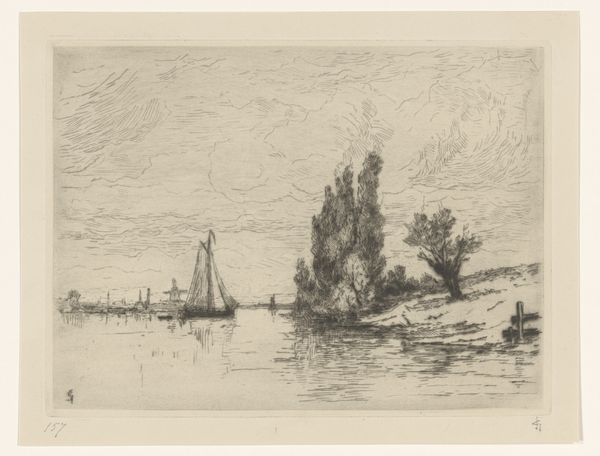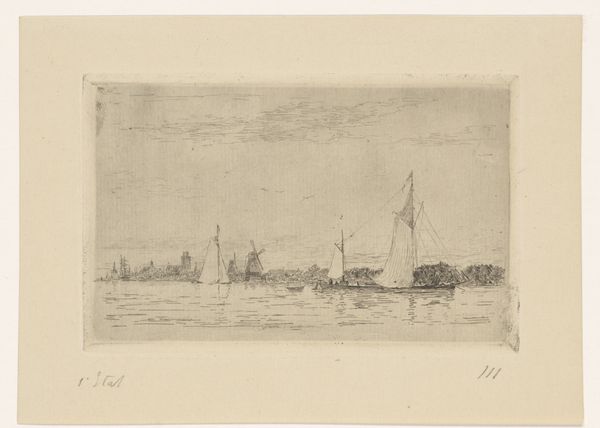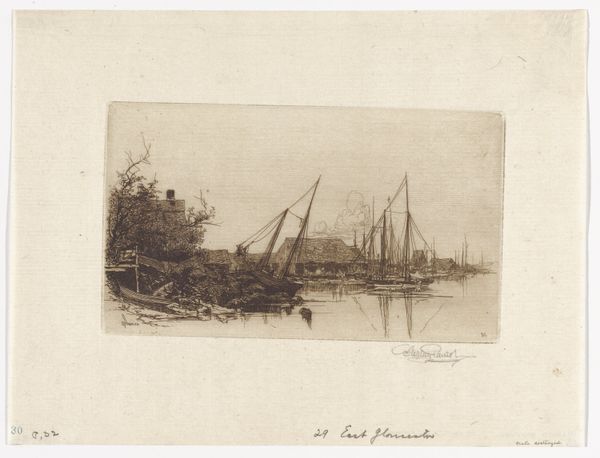
drawing, print, etching
#
drawing
# print
#
etching
#
landscape
#
etching
#
cityscape
Dimensions: 5 7/8 x 9 7/8 in. (14.92 x 25.08 cm) (plate)8 5/16 x 12 7/8 in. (21.11 x 32.7 cm) (sheet)
Copyright: Public Domain
Charles Adams Platt made "Providence" using etching, a printmaking technique that dates back to the early 16th century. The process involves using acid to cut into a metal plate, traditionally copper or zinc, creating an image that can then be inked and printed onto paper. The way the lines vary in thickness and depth gives "Providence" its atmospheric quality, capturing the mood of the harbor. Platt likely used different tools to create these lines, perhaps varying the amount of pressure applied, or using different strengths of acid during the etching process. The social and cultural significance of etching lies in its ability to democratize art. Unlike unique paintings or sculptures, etchings can be produced in multiples, making art more accessible to a wider audience. So, considering the materials, the making, and the social context helps us appreciate that "Providence" is more than just a pretty picture, it's a product of its time, a testament to the enduring appeal of traditional craft, and a response to the changing landscape of art and society.
Comments
No comments
Be the first to comment and join the conversation on the ultimate creative platform.
